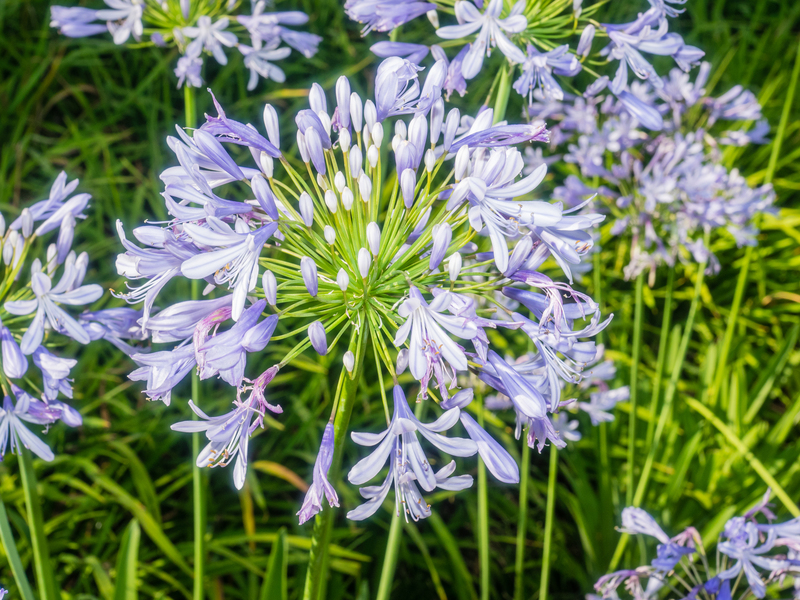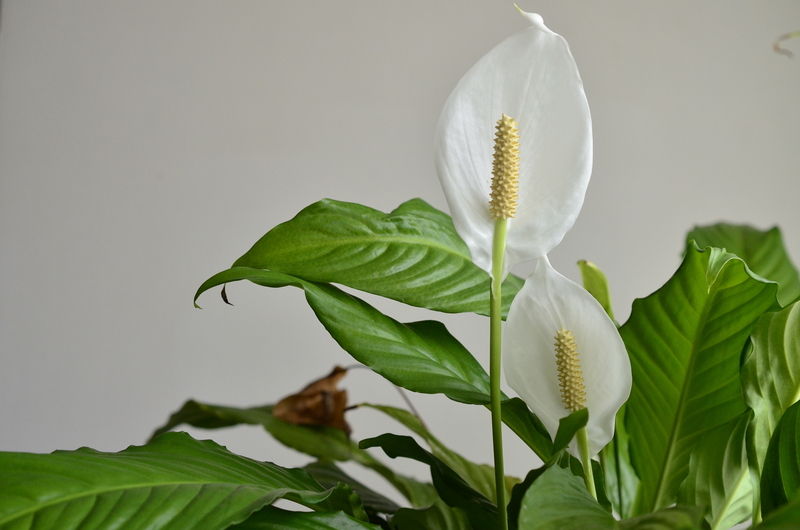Achieving Herb Garden Success in Small Spaces
Posted on 26/05/2025
Achieving Herb Garden Success in Small Spaces
Are you dreaming of fresh basil, mint, or thyme, but only have limited room to spare? You're not alone! Many modern gardeners are learning that growing a successful herb garden in small spaces is not only possible, but can also be incredibly rewarding. Whether you live in a cozy apartment, a city flat, or have just a petite balcony, you can achieve flourishing herbs with clever strategies and practical tips. In this comprehensive guide, we'll explore creative space-saving herb gardening ideas, the best practices for container gardening, and offer essential advice to ensure your mini herb haven thrives all season long.

Why Herb Gardening in Small Spaces Makes Sense
With advances in urban living and a growing appreciation for homegrown produce, cultivating a miniature herb garden has tremendous benefits:
- Freshness at your fingertips - Nothing beats the aroma and taste of freshly cut herbs!
- Saves money - Cut your cooking costs and reduce food waste.
- Reduces environmental footprint.
- Improves mental well-being - Gardening, even small-scale, is therapeutic.
- Adds natural beauty to your living area.
Even if you're a complete beginner, mastering herb gardening in small spaces is completely achievable. Let's see how you can turn a tiny corner into a fragrant oasis!
Choosing the Best Herbs for Small Space Gardens
Not all herbs are created equal when it comes to confined areas. The following compact and productive herbs are ideal for succinct herb gardens:
- Basil - Thrives in pots, fast-growing, perfect for culinary use.
- Chives - Hardy, snippable, and can regrow quickly.
- Mint - Vigorous and versatile; best kept contained to prevent spreading.
- Parsley - Compact, rich flavor, and continuous regrowth.
- Thyme - Drought-tolerant, aromatic, and ideal for borders or hanging baskets.
- Cilantro - Grows quickly and pairs well with many dishes.
- Oregano - Resilient, Mediterranean flavor - small and bushy.
- Sage - Slow grower but well-suited for pots.
Creative Herb Garden Ideas for Small Spaces
To maximize yield and beauty in tight quarters, use these inspiring ideas:
1. Windowsill Herb Gardens
A sunlit sill is a perfect home for a mini indoor herb garden. Use small pots or long window boxes. Make sure to rotate containers to ensure even sunlight exposure.
2. Vertical Herb Gardens
Utilize vertical space by installing wall-mounted pocket planters, hanging shelves, or stacked pots. This approach not only saves floor area but creates a beautiful green feature wall.
Tip: Hang a shoe organizer and fill the pouches with soil and herbs for a quirky and effective solution!
3. Tiered & Stacked Planters
Stacking planters or using a tiered plant stand allows you to plant several varieties in a small footprint. Each tier receives ample light.
4. Hanging Basket Herb Gardens
Hanging baskets are not just for flowers. Herbs such as thyme, marjoram, and oregano trail beautifully and thrive when suspended.
5. Mason Jar Herb Gardens
For a rustic touch, try planting herbs in mason jars on a ledge or attached to a wooden board. Just ensure you layer pebbles at the bottom for drainage.
Planning Your Small Space Herb Garden
Planning is essential for herb garden success in confined areas. Consider the following before digging in:
-
Assess Your Light Conditions:
- Most herbs need 6-8 hours of sun daily.
- Leafy herbs (mint, parsley) can cope with less sun; Mediterranean varieties (rosemary, oregano) crave it.
-
Choose the Right Containers:
- Opt for pots with drainage holes to prevent waterlogging.
- Terracotta, ceramic, or even recycled containers can work beautifully.
-
Use Quality Potting Mix:
- A light, well-draining mix ensures healthy roots and prevents disease.
- Add a handful of organic compost to supercharge your soil.
Planting Techniques for Small Space Herb Gardens
Proper planting boosts growth and minimizes problems. Use these steps to succeed:
- Fill containers three-quarters full with your chosen potting mix.
- Transplant young herbs or sow seeds directly according to packet instructions.
- Space them properly - herbs like their own space even in small quarters; overcrowding can cause disease.
- Water thoroughly after planting, then let the top inch of soil dry before watering again.
- Label each herb clearly to keep track, especially if you are a beginner.
Companion Planting Tricks
Even with a limited footprint, strategic grouping (companion planting) can enhance herb garden health:
- Basil and parsley enjoy similar moisture and light.
- Thyme, oregano, and sage prefer dryer, sunny conditions.
- Avoid planting mint and basil together, as mint can overpower other herbs.
Herb Garden Care Tips for Small Spaces
Maintenance is the secret to long-lasting herb garden success in compact areas:
- Regular Watering: Small containers dry out quickly. Check soil frequently, but avoid constant sogginess.
- Feed Sparingly: Use diluted organic fertilizer twice a month during the growing season.
- Pinch and Harvest: Frequent pinching promotes bushier growth and prevents herbs from bolting.
- Rotate and Move: If indoors, rotate pots for even light. In summer, bring some pots outside for a sun boost!
- Pest Management: Watch out for aphids or whiteflies. Use gentle, natural deterrents like neem oil or soapy water.
Solving Common Challenges in Compact Herb Gardens
Every small space gardener faces unique hurdles. Explore these easy solutions:
1. Limited Sunlight
Solution: Choose herbs that tolerate partial shade like mint, parsley, or chives. Consider LED grow lights or place containers on the brightest windowsill.
2. Overcrowding
Solution: Resist planting too many seeds in one pot. If you must combine herbs, select varieties with similar requirements and allow ample spacing.
3. Quick Drying Soil
Solution: Mulch around your herbs with small pebbles or shredded bark and group pots together to maintain humidity.
4. Leggy Growth
Solution: Increase sunlight, prune regularly, and don't overcrowd plants.
Harvesting and Using Your Small Space Herbs
One of the joys of a successful compact herb garden is harvesting:
- Harvest in the morning for maximum oil content and flavor.
- Use sharp scissors and take only a few stems at a time so plants can regrow.
- Regular picking encourages more abundant foliage growth and prevents flowering.
Beyond garnishing, experiment with homemade herb teas, flavored oils, pestos, and more. Dry any excess by hanging bunches upside-down or laying leaves flat in a well-ventilated area.
Small Space Herb Garden Design Inspiration
Don't overlook aesthetics! Arrange herbs by leaf color, use creative repurposed containers (teacups, tin cans), and add personalized plant labels for fun. Incorporate herbs into existing flowerbeds or mix them with succulents for textural interest.
- Match planters to your home decor for a seamless look.
- Use trellises or macrame hangers for trailing herbs.
- Consider herb spiral gardens or multi-layer stands for vertical flair.

Frequently Asked Questions About Small Space Herb Gardens
-
Q: Which herbs are easiest for beginners in limited space?
A: Basil, mint, chives, and parsley are among the easiest and most forgiving, adapting well to container gardening. -
Q: How often should I water my small herb containers?
A: Water when the top inch of soil is dry. In hot or windy conditions, daily checking is recommended. -
Q: Can I grow herbs indoors year-round?
A: Absolutely! Choose a bright spot and supplement with grow lights in winter for optimum growth. -
Q: How can I prevent pests organically?
A: Start with healthy soil, avoid overcrowding, and use neem oil sprays or encourage natural predators like ladybugs.
Conclusion: Flourish With Mini Herb Gardens
Herb garden success in small spaces is within your reach - it simply requires a little know-how, creativity, and attention to detail. With careful selection, smart use of your vertical and horizontal areas, and regular care, your apartment, balcony, or even office can become a thriving source of flavor and greenery. Even beginner gardeners will find the journey rewarding, as you watch your tiny plots turn into lush, aromatic displays.
Whether you start with a handful of basil on the kitchen counter or a full wall of staggered thyme and oregano, your efforts will be rewarded with fresh flavors and an uplifting connection to nature. Start small, experiment, and enjoy your edible sanctuary!
```
